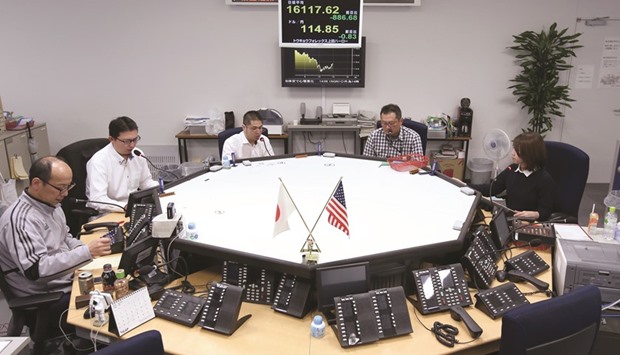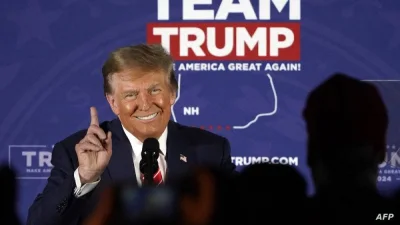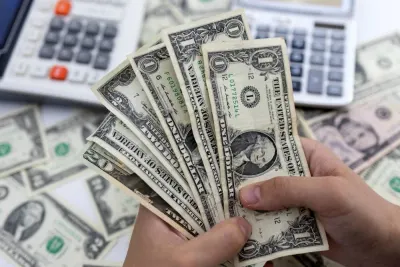The yen may strengthen to 90 per dollar within six months of Donald Trump’s election, Japan’s former top currency official Eisuke Sakakibara said.
“Trump’s ‘America first’ stance means weak dollar policies,” the 75-year-old professor, dubbed “Mr Yen” for his ability to influence the exchange rate in the 1990s, said in an interview on Thursday in Tokyo. “Gradual dollar weakness and yen strength are going to continue.”
Sakakibara, who accurately predicted the currency’s advance this year from near 120 per dollar to beyond 100 for the first time since 2013, says the yen’s decline to a three-month low reflected Trump’s toned-down rhetoric rather than a change in trend. The yen swung to a 0.5% loss against the dollar Wednesday from a surge of as much as 3.9%, the most since June’s Brexit referendum result, after a conciliatory victory speech.
The president-elect campaigned on a policy platform with protectionism at its centre, including threats to tear up trade agreements and impose tariffs that could slow Asian economies and send Japanese investors rushing back into domestic assets.
Even so, Trump’s proposals, including pledges to cut taxes and spend as much as $500bn on infrastructure, are seen as inflationary and could lead to higher US rates that would support the dollar.
Sakakibara doesn’t expect increased fiscal stimulus to raise the US debt level to beyond about 120-130% of gross domestic product, from around 105% currently, limiting any potential dollar strength. Instead, he says the yen could reach 100 by year-end.
“I don’t know exactly to what extent Trump will take a protectionist stance, but there’s no doubt that’s the way it’s going to go,” said Sakakibara, who is now a professor at Aoyama Gakuin University. “At the very least, the direction for the dollar will be down. US yields aren’t going to keep going up and up.”
The yen traded at 105.58 per dollar in Tokyo from as strong as 101.20 on Wednesday. It touched a 2 1/2- year high of 99.02 on June 24, and is the best-performing developed-market currency in 2016, climbing 14% against the dollar.
Sakakibara was a rare yen bull at the start of the year, when the consensus forecast among analysts surveyed by Bloomberg was for the currency to weaken to 125 by year-end. The median estimate is now 104.
Many investors and economists had expected 2016 to be the year of monetary policy divergence, as they predicted the Federal Reserve would continue to raise rates after liftoff from near-zero, while the Bank of Japan and others expand stimulus. Instead, the Fed has held fire, with traders forecasting the first move in a year next month. Japan’s central bank has shifted to targeting bond yields from expanding the monetary base, stoking speculation it’s reaching the limits of easing.
Sakakibara says market gyrations caused by continued uncertainty surrounding Trump’s presidency - such as who will be chosen as Treasury Secretary - could delay Fed action to next year, adding more impetus for the yen to strengthen against the dollar. But even in the event of a December hike, he says a muted US recovery along with slowing world growth will limit the potential for policy tightening.
“Globally, we have something like secular stagnation,” he said. “It’s quite difficult to raise rates in that environment.”
He also expressed concern about the rise in anti- globalisation sentiment that he credits for lifting Trump to the presidency and pulling the UK away from the bloc.
“In all likelihood, this trend toward protectionism is going to continue, leading to a reduction in global trade.” Sakakibara said. “For Japan in particular, it has the potential to be extremely negative.”

Currency traders work in the dealing room of a foreign exchange brokerage in Tokyo. The yen is the best-performing developed-market currency in 2016, climbing 14% against the dollar.


